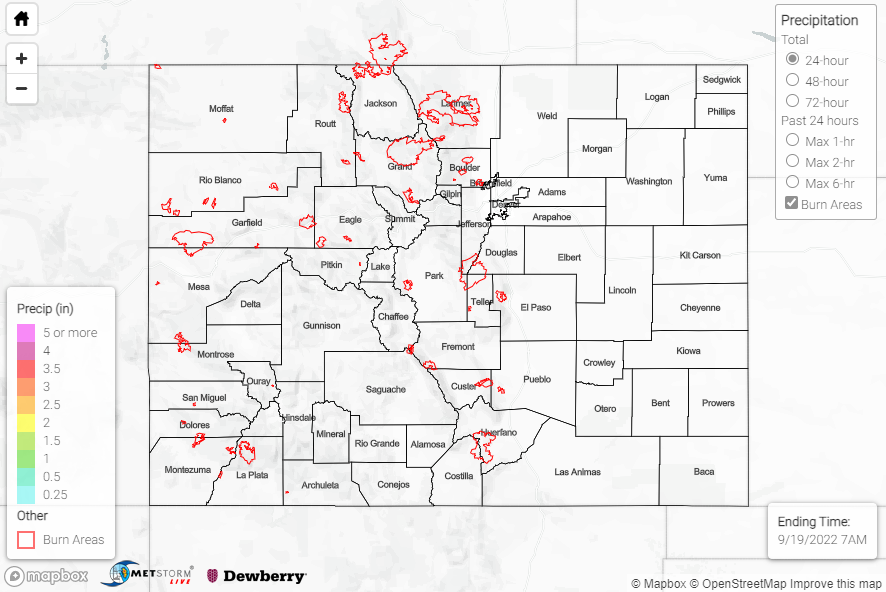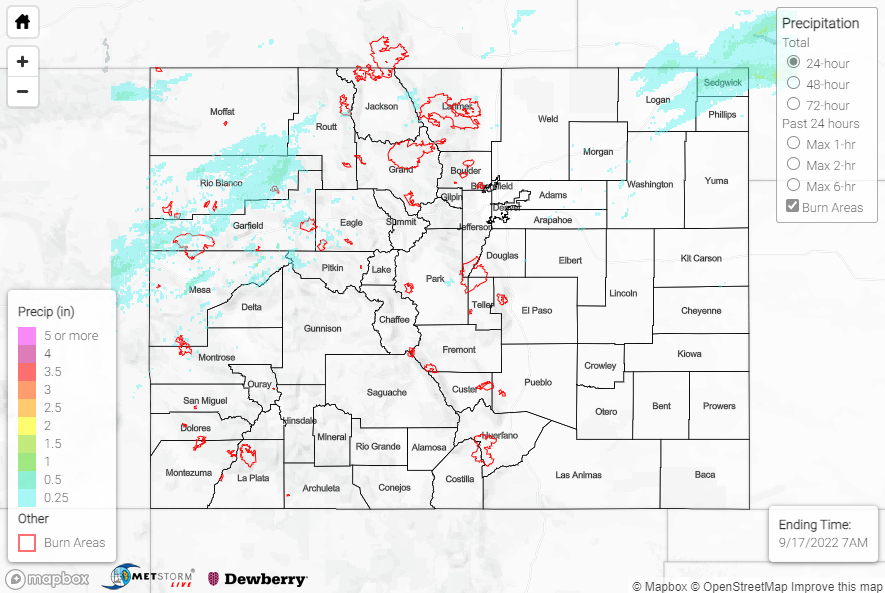Issue Date: Monday, September 19th, 2022
Issue Time: 11:05 AM MDT
Summary:
The ridge dominating the south-central U.S. built westward on Sunday, providing subsidence and dry conditions across Colorado. Precipitation was only observed at a handful of stations scattered throughout the state, with amounts of 0.05” or less. The main weather story of the past 24 hours was dense fog for portions of the eastern Plains this morning.
No flooding was reported yesterday. For precipitation estimates in our area, check out the map below. Remember, if you observe flooding in your area, you can use the “Report a Flood” page to make a flood report when you can safely do so.



